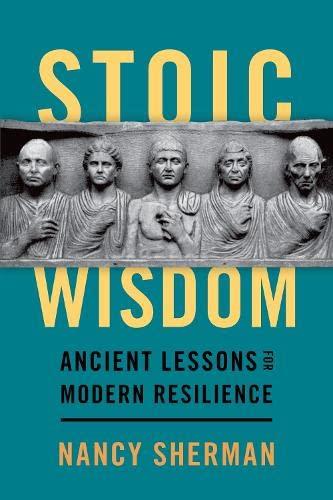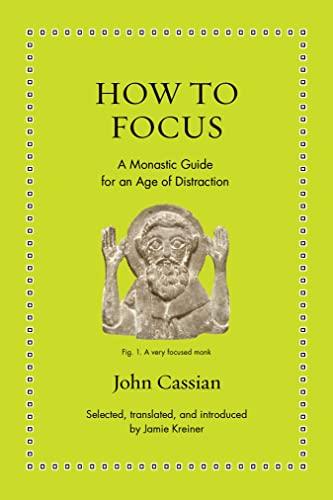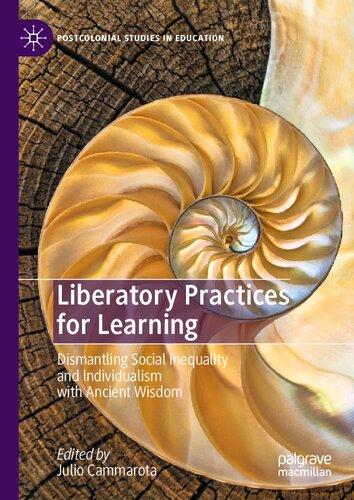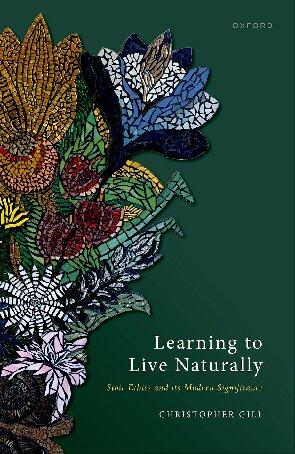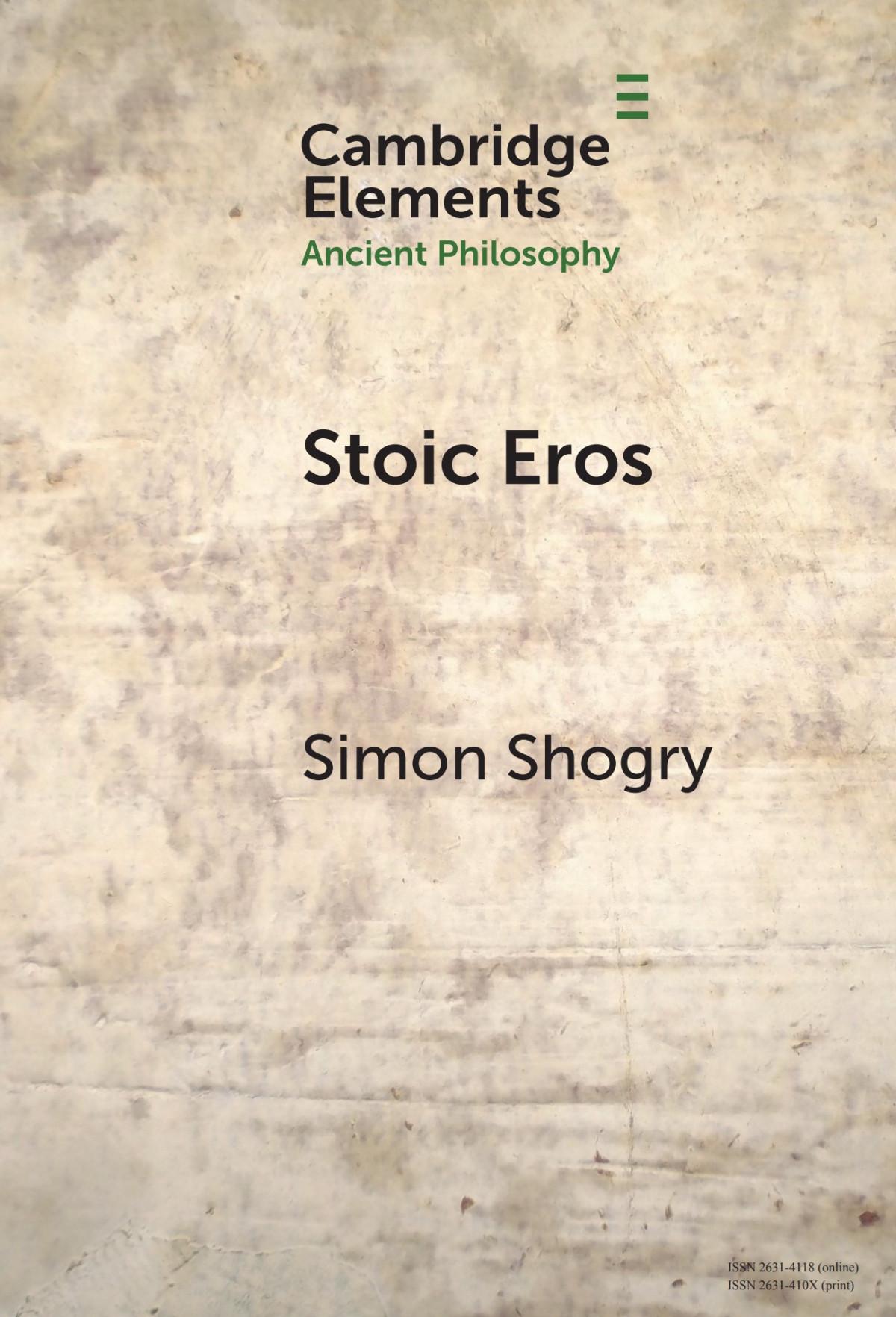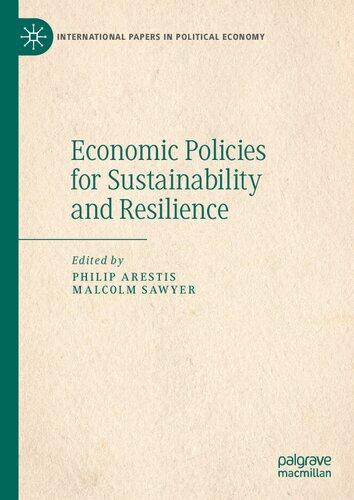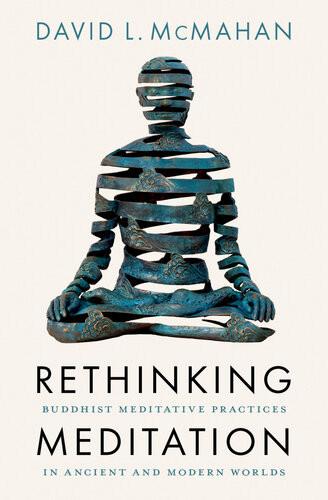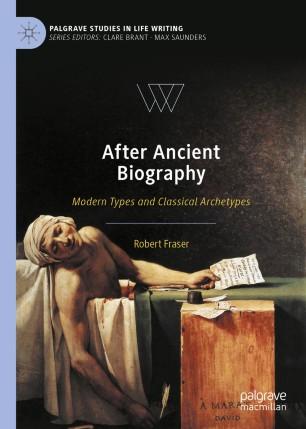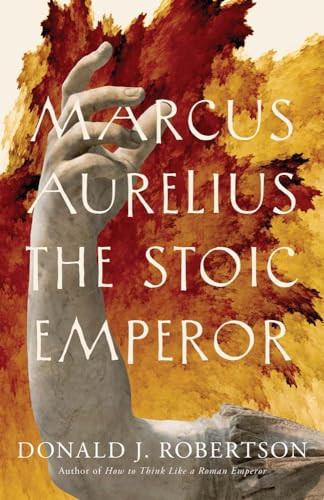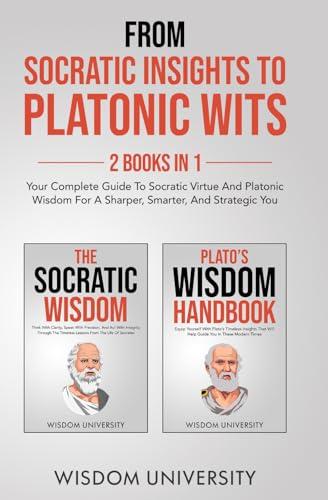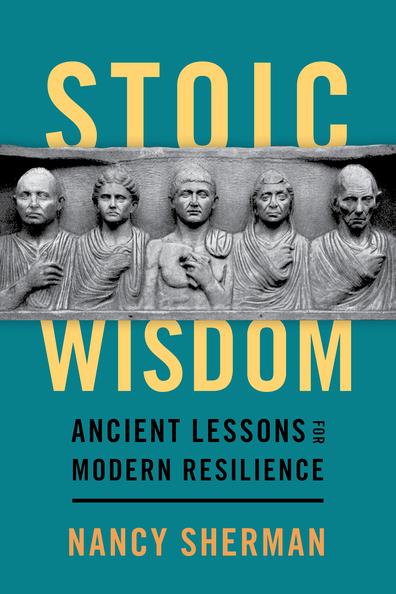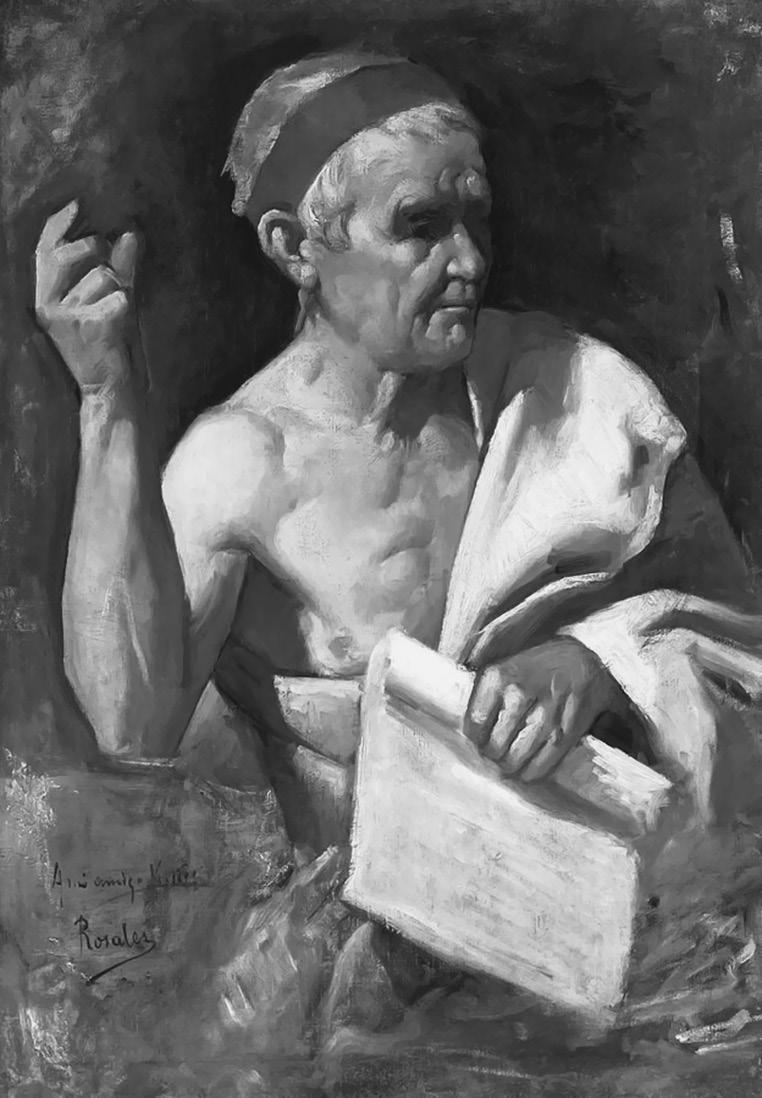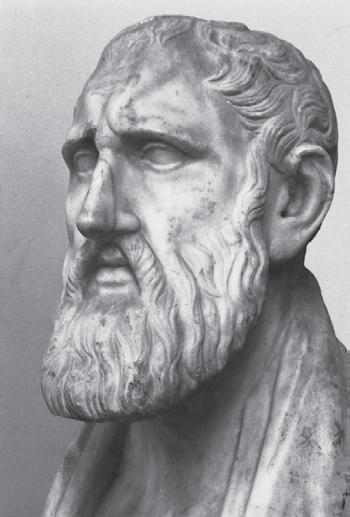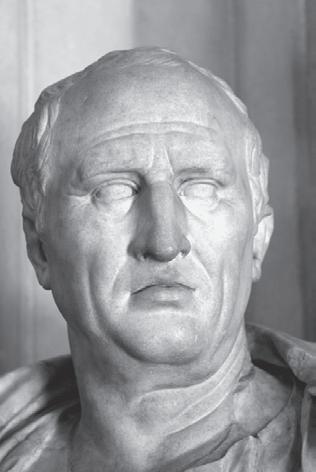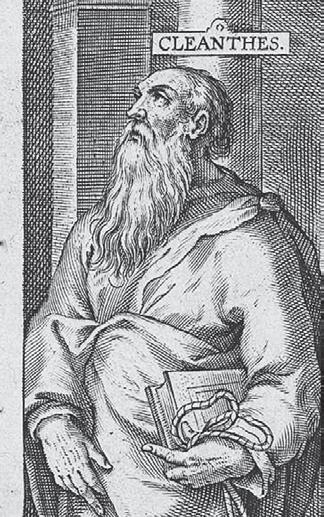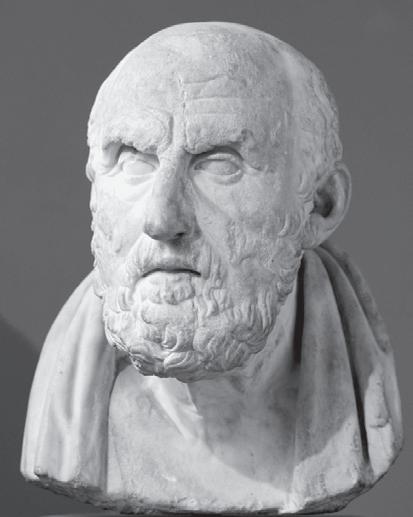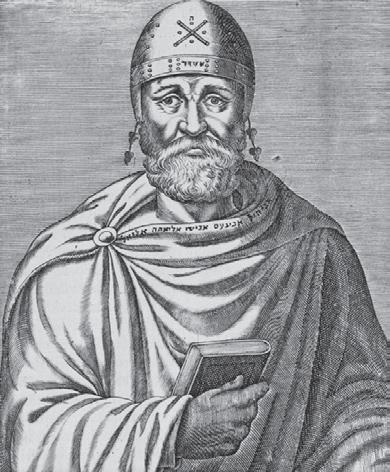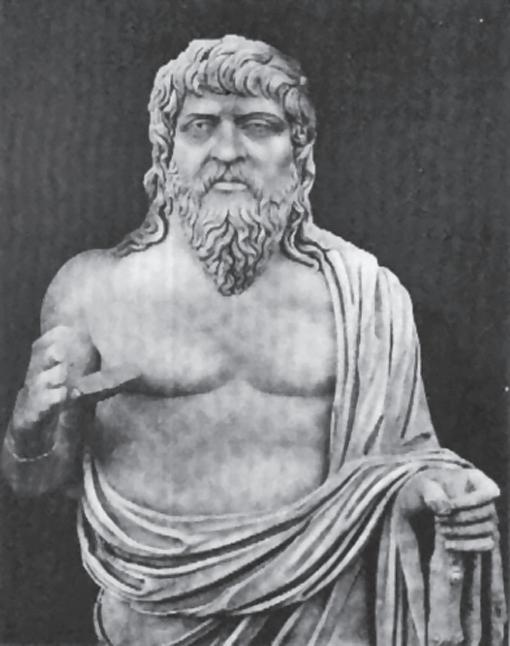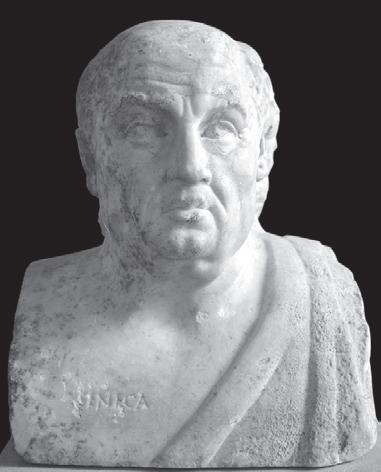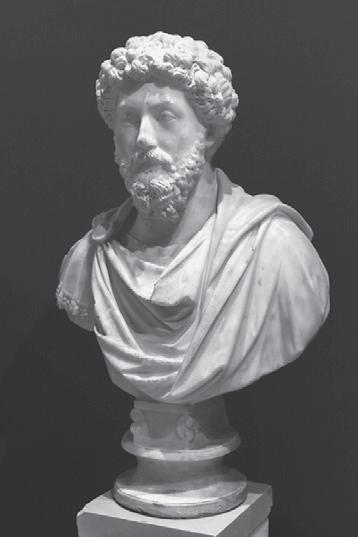THE GREAT STOIC REVIVAL
A New Zen
Stoicism has made a comeback—and a huge one at that. There are Stoic self-help books, digests of Stoic quotes, websites with Stoic wisdom to kickstart your day, podcasts, broadcasts, and online crash courses—some to learn how to become manly, others to become calm, some to learn to meditate Roman style, others to practice abstention, some to learn to take more control, others to take less. Tim Ferriss, the well-known author of The 4-Hour Workweek and popular Silicon Valley thought leader and podcast host, touts Stoicism as the “ideal” philosophy “for entrepreneurs.” It’s the right “operating system,” as he puts it, to help train people who dream big to learn when and how to contain their egos. Stoicism has become the “new Zen.” It’s a philosophical practice
for reducing stress and cultivating goodness. Beyond the online Stoic community is “Stoicon,” an international, annual meet-up to help learners of all walks incorporate Stoic practices into their daily lives. The fervor has spread to the alt-right, too, with Stoic enthusiasts championing the great works of Western civilization as a bastion of whiteness and masculinity.
It’s fair to say that Stoicism has become the darling of many. But why? For a start, it’s an accessible philosophy with pithy wisdom. Among its Roman authors and sympathizers were emperors and political advisors, the likes of Cicero, Seneca, and Marcus Aurelius, who had power and class and the gift of letters. In Seneca’s case, his most famous student was Nero, in need of daily lessons in controlling rage and anger. The political climate then was ripe for Stoicism—a philosophy of calm in the face of imperial power and intrigue. There are parallels today.
But Stoicism never was just for the elite. It was also for enslaved persons, such as Epictetus, who in a remarkable irony of history went on to inspire an emperor, Marcus Aurelius, to write his own Stoic meditations. The Meditations were meant for Marcus’s eyes only, private reflections written at nightfall in a tent along the Danube during the Germanic campaigns. The nighttime journaling was to remind himself, as emperor and general, of the importance of humility and reason-based virtue in the face of his unlimited power. Marcus embraced Epictetus’s message that we have power over our own minds and not outside events. Our wellbeing hangs on our judgments about what affects us and not on brute, uninterpreted objects or events. We are, by default, interpreters of the world. There is no unfiltered experience. In this the Stoics were prescient.
But why is Stoicism the new Zen of the West now? In part, the need for finding calm is ever pressing in Western culture. In the start-up tech world, work weeks can be manic, the lead-up to new funding rounds even tougher, and the pressure to design products that are both user-friendly and examples of smart engineering leads to stress and burnout at all levels. Life-hacking, or creating shortcuts for living efficiently and well, has gained a new attraction. Stoicism appeals to many as offering time-honored workarounds. For the alt-right, it has the additional badge of being a philosophy of “dead white men.”
The Covid-19 pandemic added a new layer of anxiety for everyone as people faced new stresses from social isolation, job losses, massive death, and basic fear. The pandemic made it abundantly clear that we need ways of preparing ourselves, emotionally and psychologically, for worst-case scenarios. In short, we are hungry for ways of dialing down anxiety and tempering despair. There is a call for self-help and for self-calm. For those looking for counsel and wisdom in the traditional Western canon, Stoicism’s GrecoRoman roots give it a seal of approval. Its recognizable imprint in much of the Western thought that followed makes it all the more approachable. On top of that, it’s a philosophy (at least the Roman school of Stoicism) that is and always has been not just contemplated, but practiced. Its pivotal idea is not to get rid of self, as Zen Buddhism teaches, but to strengthen self-mastery, while still recognizing its limits. Practicing Stoicism was for the ancients, and is now for so many moderns, a way to build resilience. Its methods are psychological but also philosophical and normative, tied to living a life of virtue and character. The goal is inner strength, woven through and through with goodness rooted in reason. The
merger is unbeatable: ancient virtue ethics meets modern lifemanagement skills.
It is hard not to be attracted to some aspects of Stoicism, especially its core idea of strengthening self-control while abiding by hard limits set by forces outside ourselves. The applications are ubiquitous. You don’t have to be Seneca in the court of Nero, or the US Navy pilot and Vietnam era prisoner of war James B. Stockdale, who embraced Epictetus’s philosophy as a survival method during seven years in captivity. The challenges of pushing the boundaries of personal control are part of all of our lives, whether as a parent trying to figure out how to influence a grown child yet worried that too much control will alienate, or as a lifehacker wanting to beat death while realizing that it’s an inflated attachment to self that is probably driving the urge. In much of life’s pursuits, we want to have more control, don’t quite know the limits, want to push hard until they’re reached, and then want to accept what must be with equanimity. In short, we want control where we can have control, and want to accept limits in due course so we don’t succumb to anger or crippling disappointment. We want to be masters of our fate, captains of our soul, to paraphrase the Stoic-inflected poem “Invictus” by English poet William Ernest Henley.
But the challenge to the Stoics, both ancient and modern followers, is to figure out just what is subject to our mastery and finesse. If, as Stoics, we draw the boundaries too narrowly, Stoicism looks like a way of playing it safe, a way of being in charge because so much is left beyond our will, in the hands of luck or the universe. If others draw the line for us, an appeal to Stoicism can overburden us as individuals and create a myth of an indomitable will
that can and should do battle whatever the conditions and systemic structures, however adverse. It leaves out the collective work of changing those systemic structures. The image of the sage tortured on the rack who still can thrive is one that Aristotle rejects as “outrageous” and that orthodox Stoics resuscitate as the paragon of virtue sufficient for happiness.
But most of us, and Stockdale certainly included, experience distress when we push against boundaries to no avail, or undermine the goodwill of those we’re trying to influence. Unimpeded exercise of cultivated or natural abilities brings pleasure. The reverse is also true: we experience pain when, despite our best efforts, we are thwarted, even if we see growth opportunities down the line.
In short, resilience as invincibility is a misguided notion. Epictetus, one of our sources, often appeals to the notion of resilience, as well as to the idea of moral training as a kind of athletic sport, where you are always ready to pick yourself up and get back in the ring. Willpower and grit know no limits. But Epictetus is a hyperbolizer. And he makes too little mention of the social supports that can sustain us or fail us.
Other Stoic writers do a better job of appealing to our connectedness and vulnerability to love and loss. A lesser known Stoic writer, Hierocles, visualizes a series of extended, concentric circles with the self at the center. “To be at home” in the world requires striving to bring the outermost circles toward the center. The Scottish Enlightenment philosopher Adam Smith, himself influenced by the Stoics, would go on to call that identification process “changing places in fancy,” honed through exercises in empathy and imagination. Marcus Aurelius paints a more visceral
image in his Meditations: Picture a dismembered hand and head lying apart from the rest of the human trunk. That’s what “man makes of himself . . . when he cuts himself off” from “the world” of which he is a part. Marcus was writing while on a military campaign. Presumably, he had in mind intimate killing and dismemberment that he had seen on the battlefield earlier in the day. Body parts can’t function cut off from the organic whole to which they belong. Similarly, we can’t thrive cut off from the political and social whole of which we are a part. The implications are critical in a world witnessing the rise of corrosive forms of nationalism and rampant hatred fed by tribalism. The pandemic has made clear that we are a global community, like it or not. The reduction of fear and risk is essential not just for our own survival, but for the welfare of distant others with whom we are connected by virus, food supplies, transportation, medicine, and technology.
The Stoics were our first serious cosmopolitans. It is not surprising. They are of a political world that had begun to extend its borders beyond the small Greek city-state or polis. The Roman Empire advanced into vast swaths of land of many continents. The actual coinage of the term “cosmopolitan” predates the Stoics. Diogenes the Cynic, the fourth-century bce immediate Stoic predecessor from Sinope (likely near Corinth, Greece), famously replied, when asked where he came from, “I am a citizen of the world,” a kosmopolitēs. Zeno of Citium (Cyprus c. 335 bce), the founder of the Stoic school, developed the idea and taught that social and political engagement in that global universe is necessary for flourishing. We share common reason and depend upon bonds of social support and cooperation to live a good life. What the ancient Stoics meant by sharing in the reason of the cosmos is likely
not ours. But one thing the Stoic notion of cosmopolitanism suggests is that resilience is not a matter of just doing your very best, with individual effort and stamina the marker of survival. Quite to the contrary, being “at home in the world”—another pivotal Stoic notion which we will explore—is a matter of being connected to others who invest in you and who sustain and support your goodness. That richer Stoic story of cultivating virtue by extending circles outward needs to be part of a critical guide of how to thrive as a Stoic. That’s part of the story I shall tell.
This book is a field guide for a credible Stoic practical philosophy. It corrects distortions in recent popularizations of ancient Stoicism and argues for Stoic tenets and practices worth following. It offers a kind of app for how to live a good life. It explores the reason for Stoicism’s revival in the tech world, in the military, in the alt-right, in self-help circles, and even in psychotherapy. It explores its appeal for all of us, in all walks around the world, as we search for calm in the face of the pandemic of a century.
A Preview of Lessons
The Roman Stoics engaged in philosophy as practical discourse. They taught, and wrote letters and meditations, as a way of giving counsel. They gave lessons for “the art of living,” as they would put it. In that spirit, here is a synopsis of Stoic lessons.
In Lesson 2, I introduce readers to the Stoics—who they were, their ideas in historical context, and their legacy. The arc of Stoic influence is long and strong. Stoic DNA is embedded in Judaism and Christianity, medieval and Renaissance thought,
Enlightenment philosophy, and American intellectual thought, as in the works of Ralph Waldo Emerson. Emerson refashioned the Stoic notion of self-mastery with a notion of self-reliance meant to challenge convention through authenticity and a commonality of mind disclosed in nature. The Stoic themes of inner mastery dependent on sociality and nature resonate throughout history.
I can only gesture at some of the intellectual trends in this book, but the key is that the Stoics are a bridge between the ancient and modern worlds. They sit at the cusp of the first millennium, and they usher in the Judeo- Christian era and the Western philosophies that follow. What’s more important to bear in mind in reading this book is that the Roman Stoics were quintessentially public philosophers. They advocated a practice of philosophy— Stoicism was a household philosophy, taught and practiced. That is precisely the appeal of Stoicism today— a philosophy for everyday living that is not the stuff of the ivory tower. But popularizations bring exaggeration and distortion. It did then—the Stoics were famous hyperbolizers, out to convince young men, their primary target, of the attractions of their school. History may be repeating itself in the ways in which Stoicism is misrepresented today. Tracking that pattern, then and now, is a critical feature of this book. In our attraction to Stoicism, are we picking up a balanced picture of Stoic teachings?
In Lesson 3, I turn to the question of Stoic practice. How does it work and what are the Stoic techniques of self- control? Are the Stoics control freaks? Or do they give us healthy ways of regulating our complicated emotional lives? The Stoics are
inveterate neologists, eager to coin terms that aren’t tainted by old ways of thinking. The aim is to carve up the inner and outer world at different joints from their predecessors. The practical upshot of the new conceptual map is that it pinpoints areas for greater self- control and techniques for strengthening that control. Monitoring the impressions and evaluations that we assent to as we take in the world will be key. But equally important will be rehearsing in advance the kinds of losses and failures we may face in order to cushion the shock of what’s unanticipated.
Separating striving from successful outcome will also be key for finding the calm that comes from knowing the limits of our control. Rehearsal and exposure to stressors bear striking resemblances to contemporary methods of trauma relief, though in today’s settings, exposure techniques are used more often after the fact, therapeutically, rather than as prophylaxis, before. Here, the Stoics have something important to teach us about how to train ourselves to diminish physical and psychological stress before we are overwhelmed by it.
How do the Stoics counsel us in managing our emotions? And which emotions? In short, does Stoic practice allow you to have emotional skin in the game? This is the subject of Lesson 4. The Stoics have a highly sophisticated and prescient account of emotions as cognitive. And they posit various levels of emotional experience, from near autonomic responses to cultivated emotions expressive of virtue and wisdom. A critical question to ask as we examine emotional regulation is if the Stoics can teach us how to limit stress in life without flattening the feelings that give life meaning—whether as lovers, caregivers, teachers, dancers, theater goers, novel readers, or engaged citizens. How do you hold
on to interest, commitment, motivation, and “stick-to-it-iveness” without the kind of passion that can occasionally unhinge you? I’ll raise these questions as we think about emotions in general, and specifically about anger and grief.
Many Stoic adherents are attracted to a program of selfmastery, rooted in hard endurance and grit. Stoicism has become shorthand for a time-honored way to build tough resilience. But as I argue in Lesson 5, resilience is a notion that is easily distorted. It’s one thing to adapt well in the face of trauma and adversity. It’s another to over-idealize the power of an individual to endure and tough it out whatever the resources. More critically, that notion of rugged self-reliance misuses ancient Stoicism. While Epictetus, one of our sources, often talks of invincibility, he is a popularizer, known for his epigrammatic bullets, and not our best representative of more nuanced Stoic thought.
I explore Stoic techniques for building resilience in light of contemporary notions of resilience. Most current psychological studies no longer view the resilient individual as “invulnerable,” but rather look at the social and cultural protective factors that promote risk and adversity adaptation. This, too, is what some of the Stoics suggest we train: protection from risk and adversity; adaptiveness, not invincibility. If a modern Stoic model of resilience is to be plausible and not simply attractive to those wanting to tough it out at all costs, then it needs to be a model for healthy resilience. Otherwise, Stoic enthusiasts are advocating models that pose potentially serious mental health risks. As I have already suggested, the social dimension that is part of our well-being is central to Marcus Aurelius’s Meditations. It is also a recurrent theme in many of Seneca’s writings—in his letters and essays, and most
vividly, in his tragic play, Hercules Furens (Hercules Raging). Here, Seneca showcases the idea that even Herculean courage requires the healing overtures of a father’s soft touch and a dear friend’s compassion to show him what, in his compulsion for heroic action, he can’t show himself. Reliance on another is critical for even a Hercules.
Stoicism has long shaped the culture of the military, as I detail in Lesson 6, drawing on my own experience teaching at military institutions. For those who serve, “to suck it up and truck on” is just to be Stoic. For many in the service academies, “stoicism” has an implicit capital “S,” with a strong nod to Greco-Roman teachings. The writings of Epictetus and Marcus Aurelius are standardly taught at the military schools in the United States and abroad. A naval admiral, venerated American hero, and military educator, James B. Stockdale famously credited his survival for seven and a half years as the senior prisoner of war in North Vietnam’s famed “Hanoi Hilton” to internalizing Epictetus’s Handbook. Yet Stoic doctrine is in tension with what is increasingly recognized in military circles as a psychological cost of war and a hazard of being a morally conscientious fighter: that is, moral injury. Moral injury is an extreme form of moral distress. Some of its symptoms overlap with those of post-traumatic stress, but its trigger is typically not overwhelming life threat but a sense of having committed, suffered, or witnessed moral transgressions. So, for example, a soldier may kill a young child in a car at a collateral incident at a checkpoint when the car, approaching a military base, failed to stop after repeated warnings. The soldier, himself a father, is racked by overwhelming guilt and shame, not lessened by the fact that the shooting was permissible, in accordance with
just war rules and the specific rules of engagement. Can the Stoics leave room for moral injury in a training bent on eliminating stress? If they can, do they also tell us how to learn from moral injury and grow? In Lesson 6, I argue “yes” to both questions. I show how the Stoics leave space for the possibility of “good” moral distress and healing through self- compassion. That is critical if injury is to open the way for moral growth and the calm of repair.
In Lesson 7, I ask: Why is Silicon Valley so smitten by Stoicism? If Stoicism teaches the wisdom of humility and knowing the limits of self-mastery, then how does it resonate with those who want to push the boundaries of control to the point of hacking life to beat death? Are Stoic-inspired lifehacks always about me, or are they sometimes about better ways to see others without bias and irrational fear? Can instant global connection through Twitter or other social media itself be a modern Stoic “collective” lifehack for facing fears bound up with racism? Relatedly, how does the modern Stoic answer worries about misappropriation of GrecoRoman “dead white men” to construct social institutions that are whiter and that exclude women, minorities, and other marginalized groups? Were ancient Stoic philosophers themselves misogynistic in their writings?
In Lesson 8, I compare Stoic and Eastern meditation. The Roman Stoics meditated at the end of each day. Seneca details his own practices. Marcus wrote his journal at the end of a day of battle. The meditative tone is moral: strengthen reason-based virtue and analyze what is in accord with nature; let go of reputation, wealth, and honor; place ultimate value in the cultivation of your goodness; practice gratitude and humility. These
are paths to equanimity. Eastern meditation practices, various forms of which I have practiced, offer less moral suasion. Vedic meditation is a practice of calming the mind by a gentle anchoring in a repeated mantra. It’s not about virtue or goodness or moral perfection. Indeed, it’s not discursive practice. The idea is not to talk or scold, but to quiet the babble. Buddhism emphasizes a notion of emptiness by letting go of illusions associated with the ego. Given that meditation is part of the appeal of the Stoic revival, just what does that meditation practice look like? If the mantras are not chants of “Om,” but moral maxims, then how do those maxims create calm when their very point is to remind us of our shortcomings so that we can resolve to do better? Is moralizing ever a viable way to find equanimity? In this lesson, I reflect on my own meditative practices, Eastern and Stoic, and those of others who draw on Stoicism in their professional lives.
I draw some conclusions about Stoic life in Lesson 9. If you still want to be a Stoic, can you be a psychologically healthy modern Stoic? Can a modern Stoic support and be supported within a life of vibrant social connections? Is Stoic resilience something more than individual rugged grit and endurance? I argue “yes,” throughout this book, to all of these questions, but it will require going beyond some of the public caricature of Stoicism and drawing on the richer reality of Stoic texts. It also requires a reckoning with the Stoics on enslavement. Epictetus was an enslaved Roman who turned to inward freedom because outward freedom wasn’t possible. Seneca wasn’t enslaved, though he was a political exile. He pleaded a powerful case for the humane treatment of enslaved Romans, but his motives
were complicated and often self- serving. The weave of human connection isn’t always benign or grounded in respect, even if that is the promise. Texts are framed by history, and the reality of lived lives are morally messier than the pure aspirations expressed in writing.
Still, those texts and their aspirations give us an abundance of wise counsel, including prototypes of lifehacks for how to find healthy calm in a world swirling with widespread fear and anxiety. The lessons are about virtue writ large, not just about me and managing desire or risk, but about us, and tools we can use together to serve a higher goal. The Stoics are exhorters. And at their best, they exhort us to rise to our potential through reason, cooperation, and selflessness.
Note on Terminology
Texts are framed by history, and so, too, language and terms. Lived lives are messy, but so too is moving in and out of time periods. Stoicism applies to us, not as ancient Greeks or Romans, but as moderns, living in our own times, with our own challenges and honest reckoning with our past. Our past includes the enslavement of African Americans and our present the legacy of that enslavement. The Black Lives Matter movement, reignited in the wake of George Floyd’s death in the summer of 2020, reopened a national conversation about race, including the language we use to talk about it and the conditions of marginalization. “Slave,” to my ear, suggests that this is a person’s whole and enduring identity. “Slavery,” in turn, conceals the institutions and agency of those who are the enslavers. I’m uncomfortable with both terms, and have
avoided using them in my own voice, whether I’m talking about modern or ancient times.
The Greeks and Romans bequeath a history of enslavement to us. Persons were enslaved by birth, by capture in war, and by sales at auctions. But the Stoics famously distance themselves from institutional enslavement. They turn real enslavement to a condition of the soul. Philo captures the Stoic paradox with a pair of treatises: “Every Good Man Is Free,” and another (unfortunately lost) “Every Bad Man Is a Slave.” The powerful and free swindler, scoundrel, and enslaver can be enslaved. The bought and beaten enslaved person can be free. It’s a retreat that distances morality from social and political reality.
Wisdom requires learning from the past, but also avoiding its sins and errors. Only then can we move forward morally, politically, and socially. And so, in my own writing, I have used the term “enslaved” persons and institutions of “enslavement” to signal that enslavement is a political and social condition imposed on a person. We need constant reminders that all persons share in humanity. If they are turned into mere tools, property, or objects, as in the case of torture and enslavement, it is imposed from outside. In a similar vein, I refer to Philo, not as “Philo Judaeus,” but as “Philo” or “Philo of Alexandria.” “Judaeus” swamps his identity.
That said, I use texts translated by others whose deep scholarship I am indebted to and respect. If they translate a text from Seneca or Epictetus or others using “slave” or “slavery,” I preserve that. I have no interest in eviscerating the past and its record. We need to see it in order to know what a better future for all of humanity might look like. The enduring Stoic promise is to empower us in our common humanity. We need to remember that as we turn to Stoicism for guidance.
Top row, from left to right: Zeno of Citium, Cleanthes, Chrysippus.
Middle row, from left to right: Cicero, Philo of Alexandria, Seneca.
Bottom row, from left to right: Musonius Rufus, Epictetus, Marcus Aurelius.
